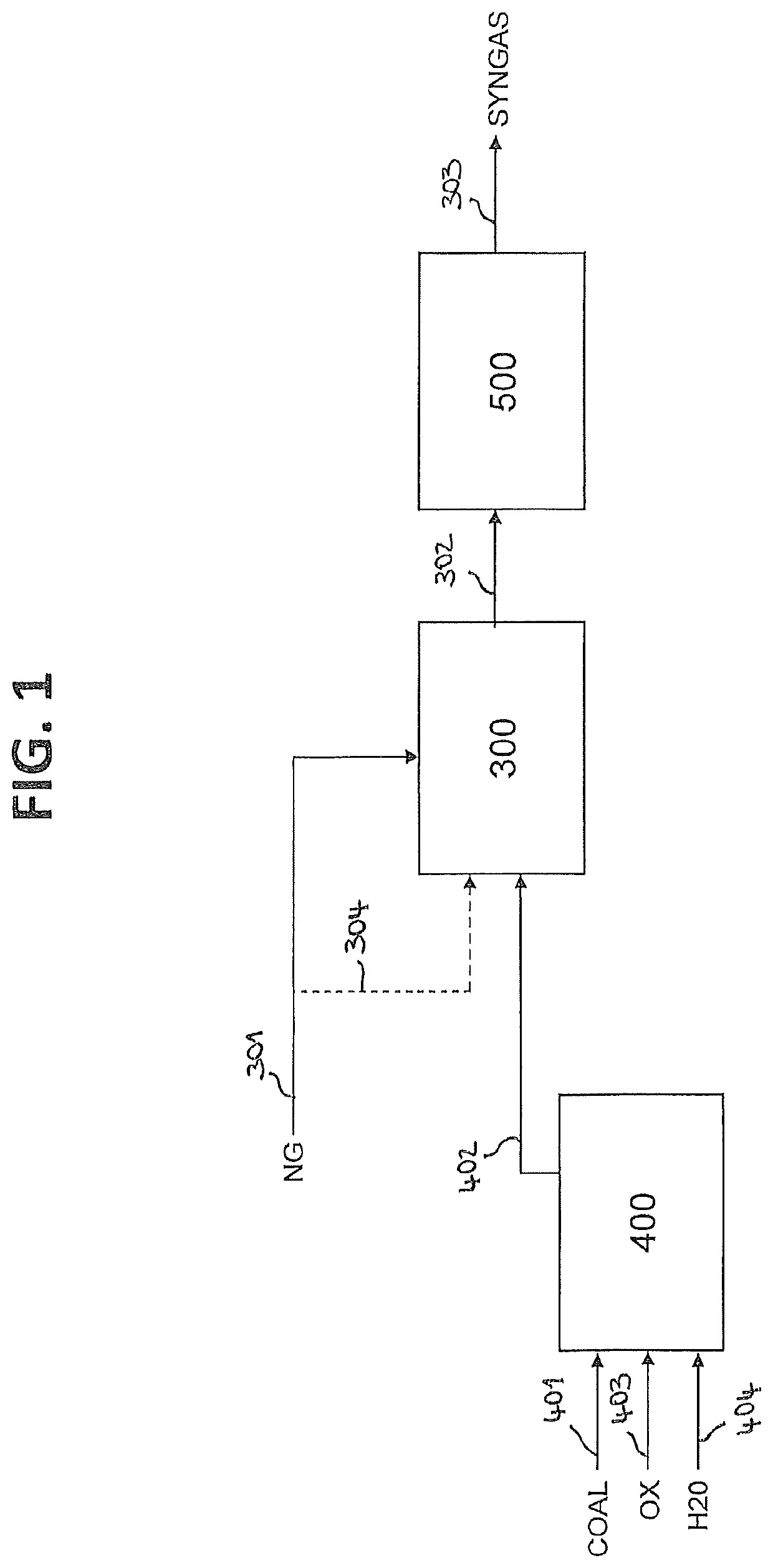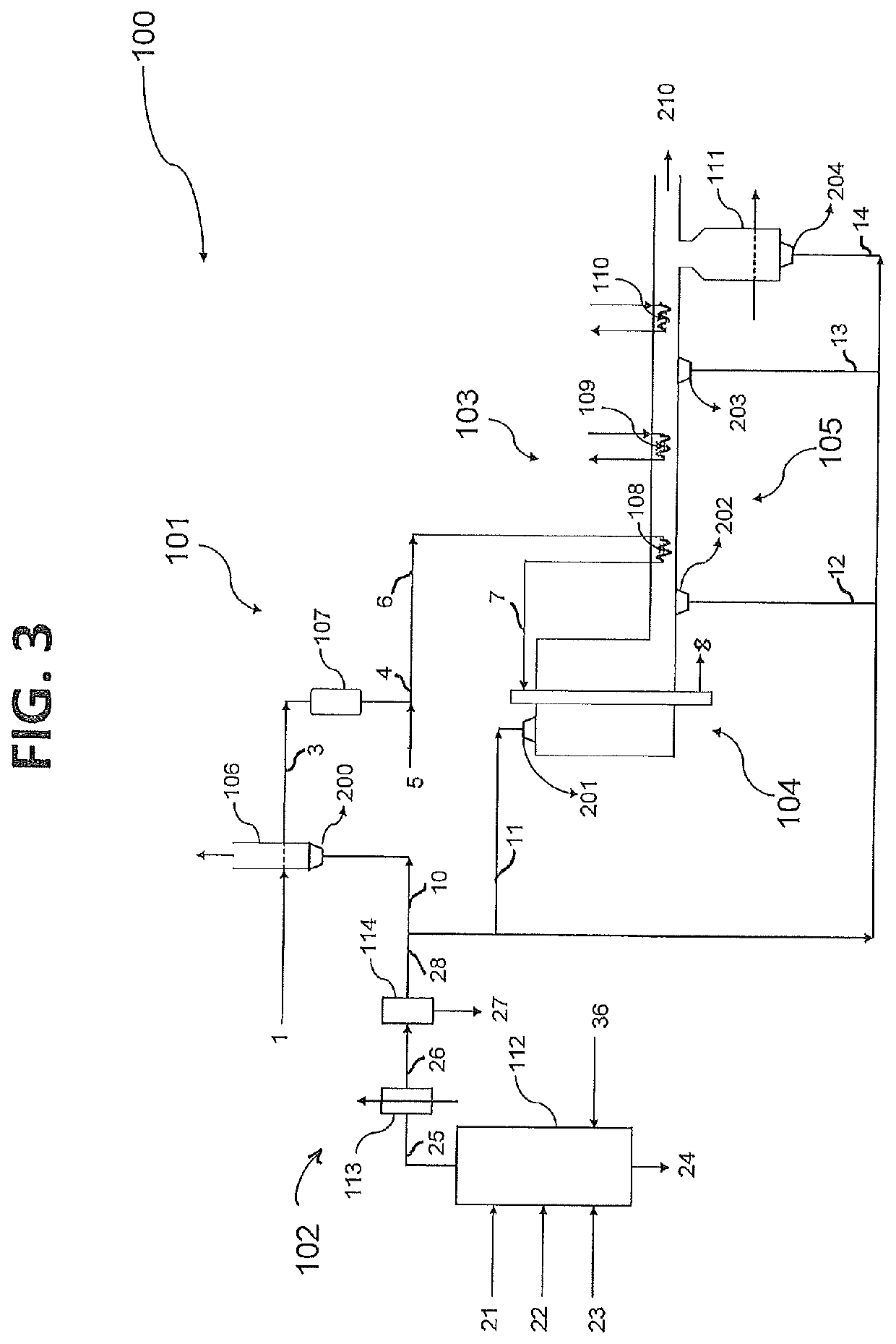Process for producing a synthesis gas
a technology of synthesis gas and process, which is applied in the direction of combustible gas purification/modification, sustainable manufacturing/processing, and separation processes, etc., can solve the problems of increasing instability of international hydrocarbon markets, limiting the quantity of natural gas, and the process available today may be too expensive to operate, etc., to achieve simple and cheap sulphur separation, reduce the amount of sulphur in the fuel gas, and reduce the amount of sulphur in the gas
- Summary
- Abstract
- Description
- Claims
- Application Information
AI Technical Summary
Benefits of technology
Problems solved by technology
Method used
Image
Examples
example 1
[0121]An integrated ammonia / urea plant based entirely on natural gas as feed and fuel produces 2200 tonnes / day of ammonia of which approximately 85% is converted into urea, of which the production is accordingly 3300 tonnes / day. Total energy requirement for the integrated plant, which is completely supplied in the form of natural gas, amounts to 5.2 Gcal LHV basis per tonne of urea product, amounting in total to 715 Gcal / h. Of this total natural gas import, 3.1 Gcal / tonne (426 Gcal / h) is required as process feed for the steam reforming process, with the balance of 2.1 Gcal / t (289 Gcal / h) used as fuel in the steam reformer and for the generation and superheating of high pressure steam.
[0122]The whole of this natural gas consumption as fuel can in principle be replaced with a fuel gas generated from coal in a gasification facility as described herein. However it is assumed that due to miscellaneous losses the total LHV heating value required would be 10% higher (318 Gcal / h) after conv...
example 2
[0124]In a plant for the methanol synthesis, whereby the gas production process is based on a pure steam reformer, 93.2% of the natural gas feed is required as process feed, with the balance of 6.8% used as fuel. The total gas consumption for methanol production according to this process route is around 7.4 Gcal / MT, based on the natural gas LHV.
[0125]Application of a first embodiment of the invention allows replacing the fuel fraction, which is 6.8%. Hence, it allows reducing the natural gas consumption to 93.2% of the original value, i.e. 6.9 Gcal / MT based on the gas LHV.
[0126]The amount of natural gas used as process feed can be drastically reduced by application of another embodiment of the invention, i.e. adding CO2 recovered from the gasifier effluent to the primary steam reforming. Accordingly, only 74.3% of the total original amount of natural gas is needed as process feed, or 5.5 Gcal / MT. The fuel fraction is produced by the gasifier. Hence, the gas consumption is reduced by...
PUM
| Property | Measurement | Unit |
|---|---|---|
| temperature | aaaaa | aaaaa |
| pressure | aaaaa | aaaaa |
| molar ratio | aaaaa | aaaaa |
Abstract
Description
Claims
Application Information
 Login to View More
Login to View More - R&D
- Intellectual Property
- Life Sciences
- Materials
- Tech Scout
- Unparalleled Data Quality
- Higher Quality Content
- 60% Fewer Hallucinations
Browse by: Latest US Patents, China's latest patents, Technical Efficacy Thesaurus, Application Domain, Technology Topic, Popular Technical Reports.
© 2025 PatSnap. All rights reserved.Legal|Privacy policy|Modern Slavery Act Transparency Statement|Sitemap|About US| Contact US: help@patsnap.com



